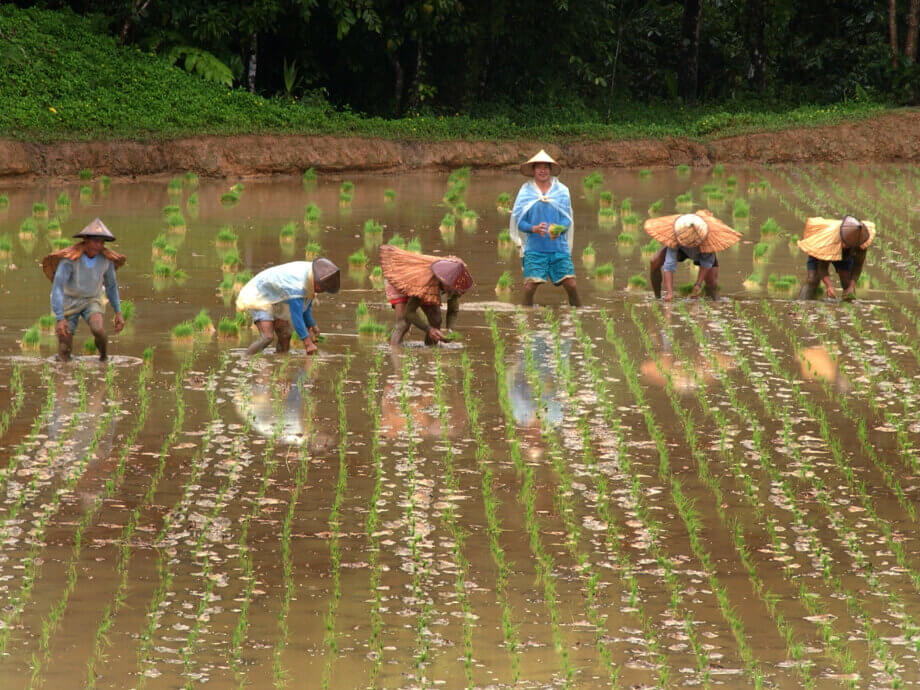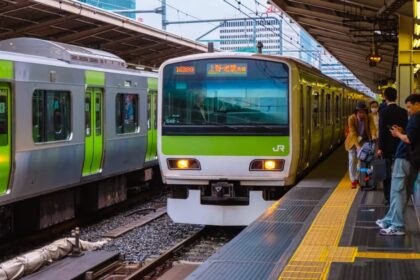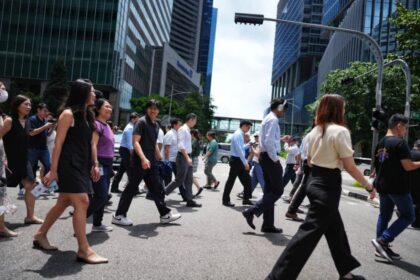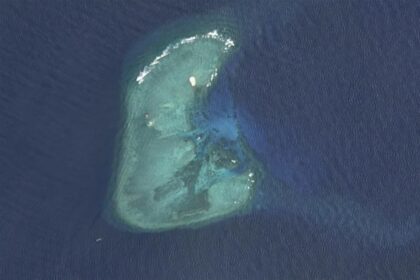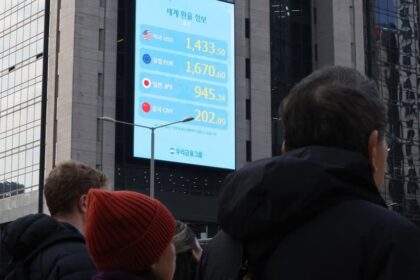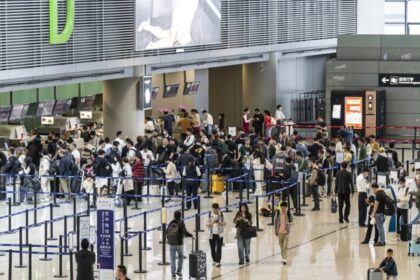Japan’s Rice Market Faces Upheaval: Southeast Asian Exports Surge
Japan, long known for its self-sufficiency and pride in domestically grown rice, is experiencing a significant shift in its rice market. Soaring domestic prices and supply shortages have prompted Japanese importers and consumers to look abroad, particularly to Vietnam and Thailand—two of the world’s top three rice exporters. This development is not only reshaping Japan’s rice supply chain but also creating new opportunities and challenges for Southeast Asian producers and Japanese farmers alike.
- Japan’s Rice Market Faces Upheaval: Southeast Asian Exports Surge
- Why Is Japan Importing More Rice?
- Vietnam’s Strategic Push: High-Quality, Low-Emission Rice
- Thailand’s Response: Expanding Japonica Production and Export Ambitions
- How Do Prices and Quality Compare?
- Broader Implications: Opportunities and Controversies
- Global Context: The Changing Landscape of Rice Trade
- Challenges Ahead: Competition, Policy, and Market Volatility
- In Summary
Why Is Japan Importing More Rice?
Several factors have converged to create a perfect storm in Japan’s rice market. Domestic rice prices have surged due to tight supply, driven by factors such as adverse weather, declining rural populations, and changing agricultural policies. As a result, Japanese consumers and businesses are seeking more affordable alternatives, and Southeast Asian exporters are stepping in to fill the gap.
Vietnam and Thailand, traditionally known for their long-grain indica rice, have rapidly expanded production of short-grain japonica rice—the same variety favored in Japan. This shift is partly fueled by the global popularity of washoku (Japanese cuisine), which has increased demand for authentic Japanese-style rice both domestically and abroad.
Vietnam’s Strategic Push: High-Quality, Low-Emission Rice
Vietnam has seized the moment with a strategic transformation of its rice industry. On June 5, 2025, Trung An High-Tech Agriculture Joint Stock Company exported the first 500 tons of “Vietnam Green Low-Emission Rice” to Japan, marking a milestone in the country’s efforts to penetrate high-end markets. This rice, a japonica variety, was produced under the ambitious “One Million Hectare High-Quality, Low-Emission Rice Project,” which aims to make Vietnamese rice both environmentally friendly and globally competitive.
The project emphasizes sustainable farming techniques, reduced greenhouse gas emissions, and strict quality control. The exported rice fetched $820 per ton—on par with Thailand’s premium Hom Mali rice and significantly higher than the average price for Vietnamese rice in other markets. This price premium incentivizes farmers and businesses to adopt sustainable practices and target demanding markets like Japan.
Building a Green Brand
Vietnam’s approach goes beyond just meeting Japan’s strict food safety and quality standards. The “Green Vietnamese Rice, Low Emissions” brand is part of a broader government strategy to address climate change, ensure food security, and elevate the value of Vietnamese rice globally. The country is piloting a Measurement, Reporting, and Verification (MRV) system to quantify emissions and establish a carbon credit market, with full implementation expected by 2028.
Pham Thai Binh, Chairman of Trung An, highlights the transformation:
“Low-emission rice production is not just about changing cultivation methods, but transforming the entire value chain: including reducing fertilizer use, promoting biological agents, implementing precision irrigation, adopting environmentally friendly harvesting techniques, and especially using digital technologies for full-process traceability monitoring.”
This holistic approach is designed to position Vietnam as a leader in climate-smart agriculture and to open doors to premium markets worldwide.
Thailand’s Response: Expanding Japonica Production and Export Ambitions
Thailand, the world’s second-largest rice exporter, is also capitalizing on Japan’s rice shortage. Traditionally, Thai farmers have focused on long-grain indica rice, but the recent boom in Japanese cuisine has encouraged a shift toward japonica varieties. In supermarkets across Bangkok, locally grown japonica rice such as Sasanishiki and Akitakomachi is now widely available, often at a fraction of the price found in Japan.
Thai farmers are finding japonica rice to be a lucrative crop. One farmer reported that he can sell japonica rice at double the price of indica rice, with the added benefit of being able to harvest up to three times a year thanks to Thailand’s warm climate. The export value of Thai rice to Japan reached $183 million in 2024, a 1.3-fold increase over the past decade.
Government Support and Market Strategy
The Thai government is actively promoting high-value rice exports. Commerce Minister Pichai Naripthaphan has stated that Thailand aims to exploit markets where its rice can command premium prices, including Japan. The government is also exploring alliances with other major exporters like India and Vietnam to stabilize global rice prices and support farmers’ incomes.
Thailand’s Department of Foreign Trade recently hosted the Thailand Rice Convention, drawing international buyers and signaling the country’s intent to remain a key player in the global rice market. Despite challenges such as occasional floods, Thailand’s rice production is expected to reach 33-34 million tons in 2024, up from 32 million tons the previous year.
How Do Prices and Quality Compare?
Imported rice from Vietnam and Thailand is significantly cheaper than Japanese-grown rice, even after accounting for tariffs. For example, a 5-kilogram bag of Vietnamese rice sold in Kanagawa, near Tokyo, was priced at about 3,200 yen ($22.40) in May 2025—roughly 20% less than the average retail price of Japanese rice. Thai japonica rice in Bangkok supermarkets sells for as little as 230-275 baht ($7-8), a quarter of the price in Japan.
Despite the lower prices, both countries are focusing on quality improvements. Vietnam’s premium rice varieties, such as ST24, ST25, and Jasmine, have won international awards and are recognized for their taste and resilience. Thailand’s Hom Mali rice remains a global benchmark for fragrant rice, and the country is investing in new varieties and sustainable practices to maintain its competitive edge.
Meeting Japan’s Strict Standards
Japan’s import system includes a tariff-free quota known as “minimum access,” allowing up to 100,000 tons of rice for direct consumption without tariffs. Imports beyond this quota face a steep tariff of 341 yen per kilogram. Nevertheless, Japanese trading companies are increasing imports from Southeast Asia because the prices remain attractive even after tariffs. Retailers like Aeon and Seiyu are now offering blends of Japanese and imported rice, as well as foreign-grown japonica varieties, to meet consumer demand.
Broader Implications: Opportunities and Controversies
The surge in rice imports from Vietnam and Thailand presents both opportunities and challenges for all parties involved.
For Southeast Asian Exporters
Vietnam and Thailand are leveraging Japan’s rice shortage to expand their market share and enhance their global reputations. Vietnam’s focus on sustainability and branding is helping it break into premium segments, while Thailand’s adaptability and government support are driving export growth. Both countries are also benefiting from India’s export restrictions, which have tightened global supply and pushed up prices.
For Japanese Consumers and Businesses
Japanese consumers are gaining access to more affordable rice options, and businesses—especially restaurants—are able to maintain profitability despite rising costs. The availability of high-quality imported rice ensures that the popularity of Japanese cuisine can continue to grow both domestically and internationally.
For Japanese Farmers
The influx of cheaper imported rice is a double-edged sword. While it helps stabilize prices for consumers, it poses a threat to domestic producers who face higher production costs and stricter regulations. If the price gap between imported and domestic rice widens further, it could undermine the livelihoods of Japanese rice farmers and spark political controversy over agricultural policy and food security.
Expert Perspectives
Yukihisa Yamada of the Norinchukin Research Institute observes:
“Local governments seem to be encouraging planting of high-value-added rice such as japonica in search of export opportunities.”
Meanwhile, Bui Ba Bong, Chairman of the Vietnam Rice Industry Association, sees the current situation as a historic opportunity:
“Japan’s current rice shortage is a good opportunity for Vietnam-made rice to enter the high-end market.”
Global Context: The Changing Landscape of Rice Trade
The dynamics of the global rice market are shifting rapidly. India, which accounts for about 40% of global rice exports, imposed export restrictions in 2023, causing prices to soar and prompting importers to seek alternative suppliers. Vietnam and Thailand have responded by increasing production and exports, not only to Japan but also to other major markets such as Indonesia, the Philippines, and Africa.
Vietnam’s rice exports reached a record 9 million tons in 2024, generating $5.8 billion in revenue. Thailand’s exports also surged, with 4.06 million tons shipped in the first five months of 2024 alone. Both countries are investing in research, quality improvement, and sustainable practices to maintain their competitive positions.
Innovation and Sustainability
Vietnam’s “One Million Hectare High-Quality, Low-Emission Rice Project” is a pioneering effort in large-scale sustainable agriculture. The project aims to balance productivity with environmental stewardship, using advanced breeding, precision farming, and digital traceability. The success of the first low-emission rice shipment to Japan demonstrates the potential for green branding and carbon credit trading in the future.
Thailand, too, is exploring new varieties and export strategies, including potential alliances with India and Vietnam to stabilize prices and support farmers. Both countries are aware that long-term success depends on meeting the evolving demands of global consumers for quality, safety, and sustainability.
Challenges Ahead: Competition, Policy, and Market Volatility
Despite the current boom, both Vietnam and Thailand face challenges. Global rice prices are subject to volatility due to weather, policy changes, and shifting demand. India’s potential relaxation of export restrictions could increase global supply and drive prices down, affecting the profitability of exports from Southeast Asia.
For Vietnam, maintaining the momentum in high-quality, low-emission rice production requires continued investment, coordination among farmers, businesses, and government agencies, and effective branding. For Thailand, balancing the interests of farmers, exporters, and consumers will be key, especially as the country seeks to diversify its agricultural exports and adapt to climate change.
In Japan, the government must navigate the delicate balance between protecting domestic agriculture and ensuring affordable food for consumers. The growing reliance on imported rice may prompt debates over food security, rural revitalization, and trade policy.
In Summary
- Japan is importing more rice from Vietnam and Thailand due to high domestic prices and supply shortages.
- Both Vietnam and Thailand have expanded production of japonica rice, the variety preferred in Japan, and are offering it at lower prices than Japanese-grown rice.
- Vietnam is pioneering high-quality, low-emission rice production, targeting premium markets like Japan with sustainable and branded products.
- Thailand is leveraging its adaptability and government support to boost exports and explore new market strategies.
- The influx of imported rice benefits Japanese consumers and businesses but poses challenges for domestic farmers and may spark policy debates.
- Global rice trade is in flux, with India’s export restrictions, climate change, and shifting demand reshaping market dynamics.
- Both Vietnam and Thailand are investing in innovation, sustainability, and branding to secure their positions in the evolving global rice market.


